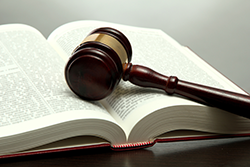
19 Jan 23
Many people rely on their cars as their main means of everyday transportation. With such a strong dependency on vehicles, accidents are likely to occur. While some accidents can be attributed to simple negligence, those involving drunk drivers are almost always catastrophic. In this blog, we’ll analyze what makes a DUI hit-and-run different from a regular DUI offense.
An Overview of a Regular DUI Crime and a DUI Hit and Run Under California Law
California VC Section 20001 mandates that if a motorist is responsible for an accident that results in death or injury, he/she is required to pull over at the accident scene and provide his/her details to law enforcement, the other motorist, and any victims. If the motorist causes damage to property (including vehicles) due to his/her conduct and fails to stop at the accident scene, then he/she would be infringing the provisions of California VC 20001 and perpetrating a Hit and Run crime as per California VC 20002a.
It’s worth noting that a prosecution under California VC 20002 alone doesn’t evaluate whether the motorist was inebriated. Evidence that you fled the accident scene and the presence of actual damages resulting from the collision are the most important elements in this scenario.
On the other hand, provisions of California VC 23152 make it illegal if you’re behind the wheel while being impaired by alcohol, drugs, or both. Therefore, in every drunk driving case and conviction, the evidence that the motorist was inebriated by intoxicants is the most important element, unlike the California VC 20002 violation. The prosecution needs to demonstrate that the perpetrator’s blood had traceable amounts of substances that are illegal to have in your system while operating a vehicle. This can be done through investigations or findings from a drug recognition specialist.
Such substances include illegal drugs such as methamphetamine and in certain cases, legally medicinal medications like marijuana. In addition, the prosecution must present evidence that the accused’s blood alcohol content was above the legal limit at the time the incident occurred. California DUI laws mandate that you cannot operate a vehicle with a blood alcohol concentration (BAC) of 0.08 percent or above, or 0.04 percent for commercial drivers. For motorists under 21, the BAC percentage shouldn’t be more than 0.01.
If a motorist is found to have been inebriated by alcohol or drugs while operating a motor vehicle and has broken both of the preceding provisions of the California vehicle code, they could be convicted of a DUI Hit and Run. If you’re found guilty, you would face harsh penalties such as driver’s license suspension, hefty fines, prison sentences, and mandatory attendance at DUI School.
What Happens in the Event of a DUI Accident
California law mandates that anyone responsible for an accident should pull over immediately at the scene. If the motorist didn’t stop, law enforcement would quickly locate and arrest the perpetrator. If the officers are successful in pulling over the driver, thorough examinations of the motorist should be conducted. This will help to determine that he or she was the individual responsible for the accident.
Some of these examinations include looking for and assessing blood stains on the accused’s vehicle, interviewing eyewitnesses to get their accounts of the accident, and reviewing surveillance footage from the accident site.
When speaking with law enforcement, victims, or anyone at the scene of an accident, you need to provide your details. The details necessary are the motorist’s name, current physical address, and the registration details of the automobile that caused the crash.
You should also provide essential support to the alleged victim like taking them to the hospital for medical assistance or dialing 911 for emergency assistance to the alleged victim. The motorist should be examined for traces of drugs or alcohol in his or her bloodstream. The chemical testing indicates whether the motorist was impaired while operating a vehicle.
If the incident causes damage to someone else’s property, you should pull over immediately. Track down and contact the owner, and provide him/her with your contact details. You can also leave a letter in an open location, like a damaged building or automobile. The letter should include your personal information as well as what happened. In line with California VC 20002, it’s a misdemeanor offense to flee the scene of an accident in which property has been damaged without first providing appropriate assistance.
It’s natural for the at-fault motorist to feel a great deal of anxiety and fear after an accident in which someone else’s property or body was harmed or even killed. It’s natural to feel this way, but getting in touch with your attorney right away can help you avoid criminal charges or being charged twice.
Elements of a Regular DUI and a DUI Hit and Run Under California Law
The jury instructions for DUI with an additional hit-and-run allegation provide that the court should determine beyond any reasonable doubt that the following is true:
- You operated the motor vehicle
- Driving while impaired by drugs, alcohol, or a combination of both
- While drunk driving, you also committed an illegal act or failed to discharge your legal obligations
- The victim suffered physical harm as a result of your illegal act or failing to carry out a legal obligation if there is any injury to the victim
“Legal duty” in this case refers to the requirements under the law to pull over and share information at the scene of an accident. This constitutes a hit-and-run crime.
To convict someone of DUI hit-and-run, the court should, according to the jury instructions, find the following elements true beyond any reasonable doubt:
- You were driving and got involved in the car accident
- The incident caused damage to another person’s property
- You were aware that you had caused the destruction of property in an accident or had reasonable cause to believe that such damage had occurred as a result of the nature of the incident
- You willfully failed to carry out one or all of the following legal duties:
- Stopping immediately at the accident scene
- Providing the owner or individual in charge of the destroyed property with your name and current dwelling address
- Providing the name and physical address of the vehicle owner that you were driving
Different Categories of DUI Hit-and-Run Crimes
Those accused of a DUI Hit and Run offense have firsthand accounts of what occurred. The motorists involved could not understand if they truly injured an individual or destroyed property, or could have caused the crash at a location where it’s illegal to stop. Possible reasons for accidents include not having a valid license, driving under the influence of alcohol, or fear of getting arrested. A DUI hit-and-run can be charged as a misdemeanor or a felony based on the circumstances.
A misdemeanor hit-and-run offense occurs when: (a) the incident was minor (no aggravating factors such as death), but the motorist at fault just opted to flee away unnoticed; (b) the motorist caused the accident as a result of drugs/alcohol impairment – even if he/she sustained no injury – but fled; or (c) the defendant fled after destroying someone’s property.
A DUI hit-and-run should involve people as opposed to the property to be classified as a felony. If an intoxicated motorist causes death or serious harm to another individual and then flees the crime scene, the driver has perpetrated a felony, irrespective of the worth of the property damaged or the severity of the victim’s injuries. For example, if a driver causes a small accident and then flees the scene, but it is later determined that the incident resulted in harm to other people, the motorist would be subject to felony DUI charges under California law.
If a person is injured in an accident and you flee the accident scene without rendering aid or reporting the incident, you can be charged with a felony under California Vehicle Code sections 20001, 23152, and 20002 for DUI Hit and Run.
Different DUI Hit and Run Penalties
If found criminally culpable of this crime, the jury will apply two laws to evaluate the convict’s forms of punishment. Penalties for causing serious bodily harm, including those that result in the disability or disfigurement of a person, are spelled out under Section 20001 of the California VC. Similarly, VC 20002 specifies the punishment for DUI Hit and Run that results in property damage. Penalties range from a misdemeanor to a felony, depending on the nature of the offense.
An Accident that Results in Injury
According to California law, you could face felony or misdemeanor penalties if the offense causes injury to any parties besides yourself. Injury severity and the defendant’s criminal history will determine the gravity of the charges.
The following penalties apply if you are found guilty of a misdemeanor offense under California Vehicle Code 20002 (b) (i):
- A sentence of not more than 12 months in jail
- Fines ranging from $1,000 to $10,000
- Both fines and a jail term
It’s important to note that your penalties could increase if you were intoxicated. They consist of reparations, informal probation that lasts no longer than three years, and two additional points that the DMV may add to your driving record. You may also be subject to a combination of any or all of these consequences. Conversely, if found guilty of a crime under this section, the fines are the same but the maximum jail time is increased to three years.
To avoid a conviction for the lesser offense of hit-and-run, your attorney could try to negotiate a civil compromise that would resolve the matter. If a settlement is reached, you’ll be responsible for covering all losses. As a result, the state will no longer pursue hit-and-run charges.
Even if the state dismisses the hit-and-run charges, a person convicted of DUI faces up to 3 years in prison, fines of $1,000 to $10,000, or both, and revocation or suspension of their driver’s license.
An Accident Resulting in Serious Bodily Harm or Death
According to California law, this type of DUI hit-and-run is punishable under VC 20001(b)(i). This is also a wobbler. Nevertheless, the severity of penalties and punishments increases depending on the severity of the crime.
If you are found guilty of DUI Hit & Run with Severe physical Injuries or a fatality (20001 (b)(ii)), you face the following penalties as part of a misdemeanor sentence: a minimum of three months and a maximum of twelve months behind bars, fines ranging from $1,0000 to $10,0000, or both fines and time in jail.
If you are found guilty of committing a DUI felony offense under California Vehicle Code 20001b (ii), you could receive a sentence of two, three, or four years in state prison, monetary fines ranging from $ 1,000 to $10,000, or both fines and the imprisonment sentence.
Do DUI Hit and Run Convictions Carry Additional Charges or Penalties?
When someone is found guilty of DUI Hit & Run, the DMV automatically adds 2 points to their driving record. If a person accumulates four points in one year, their license will be suspended for six months. Depending on the driving record, you could have your license suspended on top of other penalties for DUI Hit and Run.
The car insurance company has the right to revoke the insurance policy and/or raise your premiums if your vehicle is covered. Additionally, you’ll be responsible for paying the excess amount that’s not insured if the owner of the property you destroyed in the accident sues you.
Anyone who suffered injuries as a result of the accident can file a lawsuit against you if you are found to be at fault. When someone dies because of your actions, their loved ones can pursue legal action under civil law as well. This implies you need to pay a certain sum of money to the accident victim’s loved ones.
If you flee the scene of an accident in which someone was killed you will be charged with vehicular manslaughter under Section 191.5 of the penal code, and face an additional five years in prison.
Potential Defenses to a DUI Hit-and-Run Conviction
Defending against accusations filed under California VC sections 20001, 20002, or 23152 is dependent on the evidence given to the court. To refute the accusations against you, your lawyer will carefully review the evidence presented against you and pinpoint any errors in the prosecution’s case.
An experienced DUI lawyer can use the following legal arguments:
You Weren’t the One Behind the Wheel
If the lawyer can prove that somebody else was operating the car at the time of the accident, the charges against you will be dropped, because hit-and-run allegations are only legitimate if you had been driving the car.
You Weren’t Responsible for the Accident, as It Occurred Outside of Your Control
This is possible in the event of unconsciousness, i.e., if you caused the accident but passed out and were unable to adhere to the legal requirements, and then another car occupant drove the vehicle away. Additionally, it is not feasible to care for the victims as required by law. Furthermore, you wouldn’t be obligated to stop when a crowd of enraged people encircled your car and exiting would endanger your life;
You Didn’t Purposefully Disregard California VC 20001’s Requirement that You Share Personal Information
You didn’t willfully refuse to provide the information if, following the accident, you were incapacitated and someone in your immediate vicinity ended up taking you to the emergency room without disclosing personal details, which is required by law. You were unable to because of the current situation or circumstances
You Were Unaware that Any Damage Had Been Done Or If there Had Been an Accident
So, let’s say you’re behind the wheel and you rear-end someone’s car at a red light. As soon as you two come to a stop, you don’t see any damage. You then proceed to drive away.
After getting home, the other driver contacts the authorities to claim that their vehicle suffered damage during the accident. Your lawyer can assist in demonstrating to the judge that the allegations are not hit-and-run because you did not flee after knowing that you had caused the accident.
The circumstances are similar in the event of a physical injury. In many cases, an injury happens after the collision rather than before. For example, a car accident could only result in physical damage to the vehicle, but the victim might complain of pain several days later, and a doctor’s examination would later confirm that the pain was caused by the accident. Your defense attorney could assert that you were unaware of the victim’s injuries and you did not refuse to offer assistance.
If a blood or chemical test measuring your blood alcohol concentration shows that you weren’t intoxicated, your lawyer could try to have the charges against you reduced to hit-and-run.
Contact a Van Nuys DUI Lawyer
If you are facing a DUI Hit & Run or a regular DUI charge, you should know that there are alternatives available to assist you in getting your charges dismissed or reduced. If you work with us at Leah Legal, you have a better chance of having your case dropped or having the charges reduced. Call us at 818-484-1100 to speak with one of our knowledgeable criminal defense attorneys in Van Nuys.





